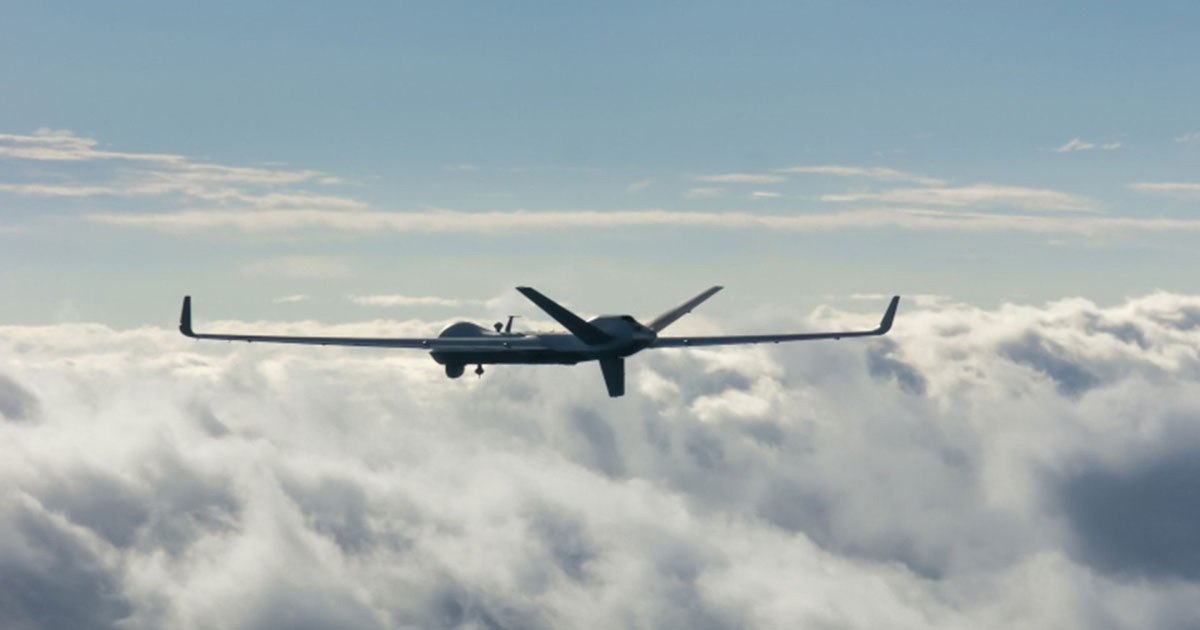Marine Corps looking to make MQ-9 drones stealthy with special pods

The Marines are trying to make their Reaper drones more difficult to detect by equipping them with a secretive high-tech pod that can counter enemy sensors, according to the service’s top officer.
The Marine Corps is acquiring MQ-9 long-endurance unmanned aerial systems to provide intelligence, surveillance and reconnaissance capabilities and to serve as a secure communications gateway and network bridge for the joint force. Officials envision the platforms exchanging data with satellites, other drones and aircraft, ships, expeditionary advanced bases, land maneuver forces, ground control stations and land-based sensors.
The littoral combat regiments that the Corps is standing up are expected to receive the drones, which are built by General Atomics.
“What they bring with them is a sensing and making-sense capability,” Commandant Gen. Eric Smith said Tuesday at a Brookings Institution event.
“Some of the pods that go on our MQ-9s are classified … [so] I’ll be careful here,” he said. There’s a type of pod that “can mimic things that are sent to it that it detects, turn it around and send it back. So it becomes a hole, it becomes a black hole, it becomes mostly undetectable.”
DefenseScoop asked Smith if he was referring to an electronic decoy capability that makes it harder for adversaries to locate the drones.
“On the MQ-9 … without crossing classifications levels [in a public forum], it has the ability to somewhat disappear off of an enemy radar. I’ll just leave it at that,” he replied.
The Reapers that the Marines have been acquiring are 36-feet long with a 66-foot wing span, have up to 27 hours of endurance, can fly at an altitude of 50,000 feet, have a payload capacity of 3,000 pounds external and 850 pounds internal, and can fly at a true air speed of 240 knots, according to slides presented at the Modern Day Marine conference in May.
Increment one for the Corps’ MUX MALE initiative will include 20 MQ-9A Block 5 systems plus associated ground control stations and Sky Tower data networking and comms relay pods. At least 12 of the drones have already been fielded.
On Tuesday, Smith did not say how many platforms are currently equipped with the special pod that makes them stealthier.
While the Reaper gained prominence as a terrorist hunter-killer for the Air Force and CIA during the post-9/11 wars in the Middle East, the Marine Corps primarily wants to use the system for communications and data relay, electronic warfare, and ISR missions in the Indo-Pacific region.
The concept fits in with the Pentagon’s Combined Joint All-Domain Command and Control initiative (CJADC2), which calls for better connecting sensors, platforms and data streams of the U.S. military and key allies under a more unified network.
“If you’re going to be out-sticked by the adversary, then in terms of sensing and in terms of striking, then you’re of no value. You have to be able to sense at range, you have to be able to make sense of what’s happening, and you have to be able to share that data ubiquitously across the battlespace with the joint force, which is why our MQ-9 is so important,” Smith said.
Looking ahead to the future, the commandant envisions the Corps having drones that operate more autonomously than today’s systems.
“There’s nothing ‘unmanned’ about unmanned, because those sensors require someone to oversee them, require someone to monitor them, require someone to maintain them,” he noted. Many drones currently in the force are also remotely piloted.
Artificial intelligence-enabled systems could improve operations, he suggested.
He noted that Navy already has an automated Close-in Weapons System (CIWS) that can defend its ships against incoming missiles and other airborne threats by firing thousands of rounds per minute. Service members can set parameters for the CIWS to engage targets without additional human input, he explained.
“So there’s a human in the loop, the human turns control over to the machine at some point. And so I think that is kind of where we’re going to have to go. Because human in the loop on all of our systems is important and it’s required really by law,” Smith said. “You’ve got a human in the loop, but it doesn’t say how far back the human has to be. And I do think automation is kind of the wave of the future. I mean, it’s already here. And machine-to-machine learning is key, which is why our MQ-9s are so important because they’re talking to each other, they’re learning. They’re bouncing off ground sensors. They’re picking up signals from destroyers, from frigates. And they’re sensing and making sense of what’s happening and they’re ubiquitously passing that data to the ground force, to the surface force.”



